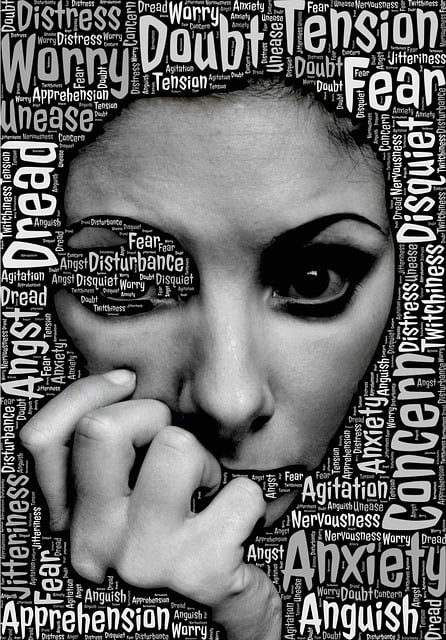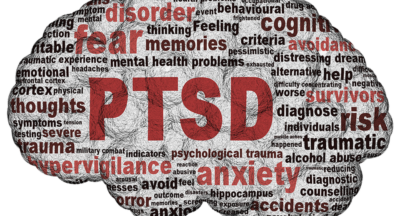
Some of the many facets of anxiety: Understanding “avoidance behaviors” from those who practice it daily and the ways to work with their anxiety.
Avoidance behavior (A.B) is a common but often misunderstood response to anxiety. It involves evading situations, thoughts, or feelings that trigger discomfort or fear. While avoidance might offer temporary relief, it can reinforce anxiety in the long term, trapping individuals in a cycle of fear and evasion that limits their ability to live fully.
At its core, A.B is a coping mechanism. When confronted with a situation that provokes anxiety, the natural response might be to escape or avoid it. This response is driven by the body’s instinct to protect itself from perceived threats. For example, someone with social anxiety may skip social events (agoraphobia) to avoid the fear of being judged by others, or a person with a specific phobia might avoid environments where they could encounter the object of their fear, such as spiders (arachnaphobia), heights (acrophobia), or people (anthropophobia).
It may provide immediate relief from anxiety, which reinforces the behavior with more intensity and co-dependency. For example, if someone avoids a public speaking event and feels a sense of relief, they are more likely to avoid similar events in the future. Over time, this reinforcement strengthens the avoidance behavior, making it more ingrained and harder to break.
Here are some common types of avoidance behavior:
- Situational Avoidance: This involves avoiding specific situations that cause anxiety, such as flying, driving, or public speaking.
- Cognitive Avoidance: This is the mental act of pushing away distressing thoughts or memories. People might distract themselves or engage in compulsive behaviors to avoid thinking about what troubles them.
- Emotional Avoidance: Individuals may avoid emotions by numbing themselves, using substances, or engaging in other behaviors that prevent them from feeling anxious or sad.
- Social Avoidance: Avoiding social interactions due to fear of judgment, rejection, or embarrassment is another common form of avoidance related to social anxiety.
While avoidance might reduce anxiety in the short term, it has significant long-term consequences. It can lead to:
- Increased Anxiety: Over time, the range of situations that provoke anxiety may widen, making the person more anxious overall.
- Reduced Functioning: Avoidance can interfere with daily life, preventing individuals from pursuing opportunities, forming relationships, or enjoying activities.
- Isolation: Social avoidance, in particular, can lead to loneliness and isolation, further exacerbating mental health issues like depression.
- Dependency: Some individuals might become dependent on safety behaviors or others to help them avoid anxiety-provoking situations, which can limit their independence.
How can we help those dealing with avoidance behavior?
First, it is important to recognize avoidance behavior: Being alert to avoidance behavior is crucial for helping someone manage their anxiety. Some signs to watch for include:
- Frequent Excuses: Someone who frequently avoids certain activities or makes excuses to get out of them might be engaging in avoidance behavior.
- Patterns of Withdrawal: Notice if a person consistently withdraws from situations, conversations, or activities that might trigger anxiety.
- Subtle Changes in Behavior: People might not always outright avoid something; instead, they might engage in subtle behaviors like procrastination or diversion to delay confronting anxiety-inducing situations.
- Non-Verbal Cues: Avoidance can also manifest through body language. A person might seem tense, uncomfortable, or distracted in situations they would rather avoid.
Second, it is to understand some obvious triggers: To effectively identify avoidance behavior, it’s important to understand what triggers the individual’s anxiety. Triggers can be highly specific, such as certain social situations, or more general, such as any situation that feels out of control. By recognizing these triggers, you can better anticipate when someone might engage in avoidance behavior.
Third, have open communication: Encourage open conversations about feelings and behaviors. Sometimes, people might not even be aware that they are avoiding something out of anxiety. Talking about their experiences can help them recognize and address these patterns.
Fourth, pay attention to sudden changes: If someone suddenly changes their routine, stops participating in activities they used to enjoy, or becomes more withdrawn, this might indicate an increase in avoidance behavior due to rising anxiety.
To all therapist out there: Here are some ways to work with those who practice avoidance behavior
1. Building Trust and Providing Support: When working with someone who practices avoidance behavior, establishing trust is essential. They need to feel safe and understood, rather than judged or pressured. Be patient and empathetic, recognizing that their avoidance is a coping mechanism rather than a character flaw.
2. Encouraging Gradual Exposure: Gradual exposure is one of the most effective strategies for overcoming avoidance behavior. It involves slowly and incrementally facing the feared situations, starting with less challenging scenarios and gradually working up to more difficult ones. This process helps to desensitize the individual to the triggers and reduces the intensity of the anxiety response over time.
3. Setting Achievable Goals: Help the individual set small, realistic goals for confronting their avoidance behavior. For example, if someone is avoiding social situations, the first goal might be to attend a small gathering with close friends before moving on to larger events. Celebrate each success, no matter how minor, to build their confidence.
4. Teaching Coping Strategies: Equip the person with coping strategies to manage their anxiety when they begin to face the situations they have been avoiding. These strategies might include:
- Relaxation Techniques: Breathing exercises, progressive muscle relaxation, and mindfulness can help manage the physiological symptoms of anxiety.
- Cognitive Restructuring: Encourage them to challenge the negative thoughts that fuel their anxiety. This involves identifying irrational or exaggerated thoughts and replacing them with more balanced, realistic ones.
- Grounding Techniques: Help them stay present and focused during anxiety-provoking situations through techniques like the 5-4-3-2-1 method (identifying things you can see, touch, hear, smell, and taste).
5. Encouraging a Supportive Environment: Create a supportive environment where the person feels encouraged to face their fears rather than retreat from them. Surrounding them with understanding friends, family, or colleagues can make a significant difference in their ability to confront anxiety.
6. Addressing Safety Behaviors: Safety behaviors are actions people take to feel more secure in anxiety-provoking situations, such as carrying a certain item for comfort or always having an exit strategy. While these behaviors can offer temporary relief, they can also reinforce avoidance. Work with the individual to gradually reduce their reliance on safety behaviors.
7. Encouraging Professional Help: For many people, professional help is necessary to overcome avoidance behavior. Encourage the person to seek therapy, especially Cognitive Behavioral Therapy (CBT), which is particularly effective in addressing avoidance. Therapists can guide them through exposure exercises, cognitive restructuring, and other therapeutic techniques to manage anxiety.
8. Patience and Persistence: Overcoming avoidance behavior is often a long process with setbacks along the way. Be patient and persistent in your support. Understand that progress may be slow and that it’s important to keep encouraging the person to move forward, even when it’s difficult.
9. Reinforcing Positive Change: Whenever the person successfully faces a situation they previously avoided, reinforce this positive change. Acknowledge their courage and the effort it took to confront their fears. This reinforcement can help motivate them to continue tackling their avoidance behavior.
10. Managing Your Own Reactions: When supporting someone with avoidance behavior, it’s important to manage your own reactions. Avoid expressing frustration or impatience, as this can exacerbate the person’s anxiety. Instead, remain calm, supportive, and encouraging.
A.B is a complex and deeply ingrained response to anxiety that can severely limit a person’s life. Recognizing and understanding this behavior is the first step in helping someone move beyond it. Through patience, support, and strategies like gradual exposure and cognitive restructuring, it’s possible to help individuals reduce their reliance on avoidance and reclaim their lives.
Working together, we can guide those who practice avoidance behavior toward greater resilience, confidence, and freedom from anxiety.

dr.dan
Related Posts
Anxiety and dental care: The double-edge sword between optimal oral health and mental trauma
The connection between anxiety and oral care is a widespread phenomenon...
The many faces of Trauma: The many strategies in building coping skills for trauma triggers. Not ONE solution fits all!
Trauma can have a profound and lasting impact on an individual’s mental,...
The many ways that depression influences sleep patterns: From insomnia to hypersomnia (not always symptom of narcolepsy).
Depression can significantly influence your daily sleep in various ways....
The hidden signs of unprocessed trauma: What to look for, how to understand them and stay away from denial at all cost. The many difficult challenges ahead!
Unprocessed trauma can cast a long shadow over one's life, often manifesting...



